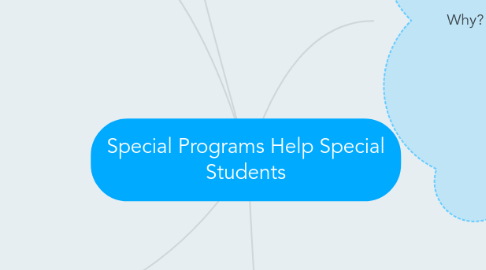
1. Why?
1.1. Special education rooms have a lower teacher-student ratio. Therefore, the special education teacher is able to work with the special needs student either individually or in a very small group.
1.2. The special education teacher has received specialized training on how to work with special needs students.
1.3. The special education knows how to modify the curriculum to meet individual student's needs.
1.4. The special education teacher is equipped with appropriate educational materials that meet the needs of individual students.
1.5. Assistants are present in the special education room so students can receive more needed attention from teachers.
2. Who benefits?
2.1. Students with disabilities would benefit. Academically, they would be working on their individual levels. They would receive more teacher attention. In addition, mainstreaming would allow them to gain experience interacting with a class of their peers.
2.2. Students in the regular classroom would benefit when the special education students are mainstreamed for a portion of time in the regular classroom. They would learn to respect differences and learn how to interact with special students.
2.3. Regular classroom teachers benefit by including special needs students into the regular classroom at different times during the day.
2.4. Special education teachers benefit because they are able to work with their students individually or in small groups on academics, social skills, and more.
3. Where does a student with disabilities learn? (at my school)
3.1. In the special education room
3.2. In the regular classroom
3.3. In the lunchroom (He eats lunch with his same-aged peers.)
3.4. At special classes including Music, P.E., Art, and Library (He takes these classes with his same-aged peers.
4. Opponents
4.1. Some people do not support "Special Programs." They prefer "Full Inclusion."
4.1.1. They support equal education for all students.
4.1.1.1. They don't take individual needs into account.
4.1.2. They expect teachers to modify the curriculum for 1 student with a disability.
4.1.2.1. However, this will water down the curriculum for the rest of the students.
4.1.3. They ignore the part of the IDEA law that says that special education students should learn in the "least restrictive environment."
4.1.3.1. They don't want to talk about what happens when the student is in the regular classroom at his frustration level and the acting out behaviors that come with it.
4.1.3.2. They don't want to talk about what happens when a special needs student acts out in the regular classroom, negatively affecting his learning and the learning of the students around him.
